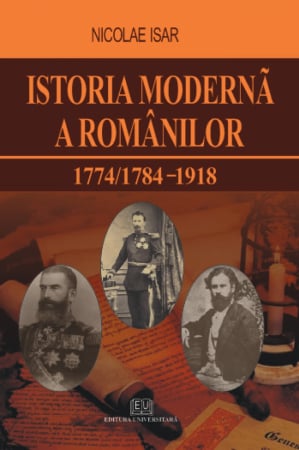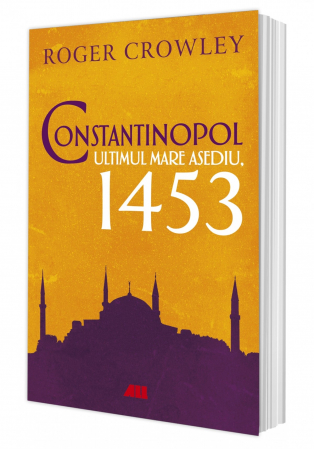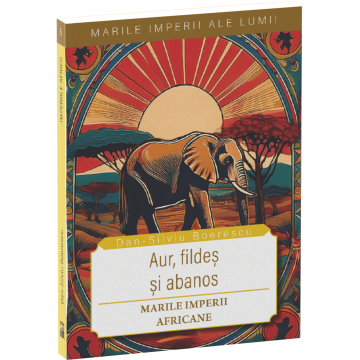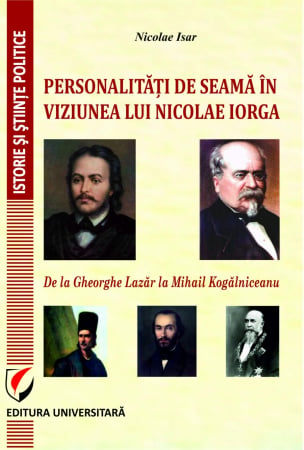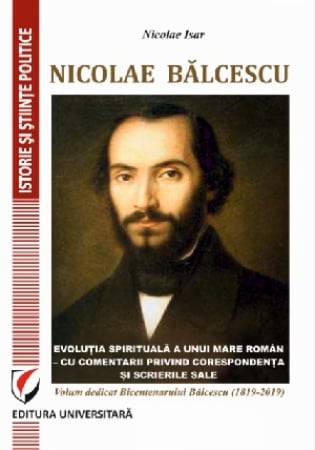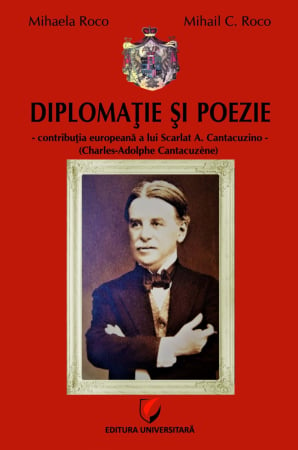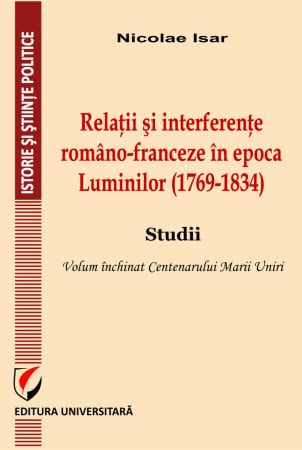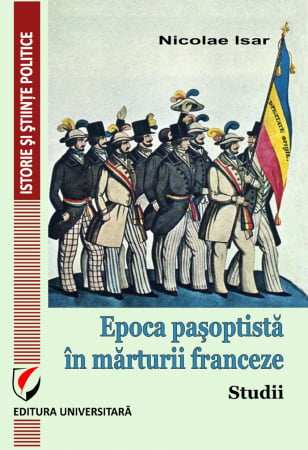ISBN: 978-606-28-0650-7
DOI: 10.5682/9786062806507
Publisher year: 2017
Edition: I
Pages: 212
Publisher: Editura Universitară
Author: Eugen Crihan
- Description
- Download (1)
- Authors
- Content
- More details
- Reviews (0)
The paper is the result of an archival investigation into the communist press of the 1950s. Specifically, 222 issues of the weekly "Drum nou", a press organ of the PMR Jibou District Committee (between 1951-1953) and then of the PMR District Committee Zalau (until his disappearance in 1958) were investigated. We studied four years of publication and we hope, as a result of the deposition of the data of the 222 newspaper issues, to have provided a true picture of the ideological-propagandistic "performances" of the press of those times and the media pressure made by communists on the village and the peasantry.
Eugen Crihan
-
SATUL SALAJEAN IN PRESA COMUNISTA A ANILOR 1950
Download
Foreword / 7
I. Wealthy / 12
II. Collective agricultural holdings / 43
III. Odds / 83
IV. Self - imposition and voluntary work / 103
V. Cooperation, contracting / 112
VI. Propaganda, agitation, party education / 131
VII. Political and public activity / 152
VIII. School, illiteracy, health / 162
IX. Cultural centers, cultural and sports life / 174
X. Socialist competitions / 187
XI. The leading villagers / 196
We studied four years of publication (between 1952-1955) and we hope that, following the stripping of data from 222 newspaper issues, we provided a true picture of the ideological-propagandistic "performances" of the press of those times.
On the other hand, the volume is, as we hope, part of a wider set of works that are meant to provide an increasingly accurate and scientifically relevant picture of the modes of action and the consequences of communist totalitarianism in Romania.
From the relatively vast historiographical literature that comes in recent years to cover more and more information gaps, we select for the limited needs of this volume works such as those of Dan Catanus and Octavian Roske - Collectivization of agriculture in Romania. The political dimension, vol. 1, 1949-1953, and vol. 2, 1953-1956, both appeared under the aegis of INST, in the years 2000, respectively 2005. The same authors offer in Collectivizing agriculture in Romania. Legislative framework 1949-1962, INST, 2007, a quasi-exhaustive documentary image on the repressive legislation of the totalitarian state, because their volume Collectivization of agriculture in Romania.
Repression, INST, 2004 to provide us with relevant details on the repressive action of the communist authorities. A pertinent analysis of the collectivization phenomenon is offered by Bogdan Tanasescu in Collectivization between propaganda and reality, Ed. Globus, 1994, and Sanda Borsa and Mihai Croitoru make in the work Collectivization of agriculture in Romania: legislative mechanisms of subordination of the rural world (1949-1962), Ed. Mega, 2009, a pertinent and documented approach to the legislative action that led to the annihilation of the traditional Romanian world. We have reference research in the field in Dorin Dobrincu and Constantin Iordachi - The old and new Chiaburii (Wealthy): the incarceration and the uncleaning of the peasants from Aurel Vlaicu, Polirom, Iasi, 2005, as well as in Gail Klingman and Katherine Verdery - The peasants under siege. Collectivization of agriculture in Romania, Polirom, Iasi, 2015.
Relevant for the theme of our volume are also works such as those of Cosmin Budeanca and Florentin Olteanu (coord.) - Individual and collective destinies in communism, Institute for the Investigation of the Crimes of Communism and the Memory of the Romanian Exile, Polirom, 2013; Sanda Borsa - Collectivization of agriculture in the former administrative region of Cluj (1949-1962), Mega Publishing House, 2012; Dorin Dobrincu and Constantin Iordachi (coord.) - Peasantry and power. The process of collectivization of agriculture in Romania (1949-1962), Polirom, 2005; Gheorghe Iancu, Virgiliu Tarau, Ottmar Trasca (coord.) - Collectivization of agriculture in Romania. Legislative aspects (1945-1962), Cluj University Press, Cluj-Napoca, 2000; Eugen Denize, Cezar Mata - Communist Romania. The state and propaganda 1948-1953, Cetatea de Scaun Publishing House, Targoviste, 2005; Eugen Denize - Communist Propaganda in Romania, Cetatea de Scaun Publishing House, Targoviste, 2011; Constantin Iordachi and Dorin Dobrincu (eds.) - Transforming Peasants, Property and Power. The collectivization of Agriculture in Romania 1949-1962, CEU Press, Budapest, New York, 2009.
From the multitude of studies dedicated to communism after 1990 we mention here: Andreea Andrei - Romanian Collectivization from 1949-1962, Sfera Politicii, no. 178; Nicoleta Ionescu-Gura - The social category of the “chiabur” (wealthy) in the PMR conception from the 1950s, Annals Sighet, vol. 8; Florin Abraham - Case study on pro-collectivization propaganda in Somes-Odorhei commune, Salaj county (1946-1950), in the Sovietization of northwestern Romania, 1944-1950, Satmar Museum, 1996; Gheorghe Sisestean - Aggression and collectivization in Salaj, in the Sovietization of northwestern Romania, 1944-1950, Satmar Museum, 1996; C. Degeru and O. Roske - Collectivization of agriculture. The Soviet model: the road to abundance, Archives of totalitarianism, year II, no. 3, 1994; Valeriu Antonovici - Patriotic work: social control and mobilization in the socialist project, in Repression and social control in communist Romania, Yearbook of the Institute for the Investigation of the Crimes of Communism and the Memory of the Romanian Exile, vol. V-VI, Polirom, 2011; Camelia Moraru - Dobrogea agriculture and the division of peasants on class criteria, Annals of Sighet, vol. 8; Lavinia Ivascu - "We were not human, because we were idiots". Testimonies regarding the collectivization in Maramures, Annals of Sighet, vol. 8; Gheorghe Onisoru - Propaganda and counter-propaganda: the theme of the kolkhoz (1944-1949), Annals of Sighet, vol. 2; Mihai Gheorghiu - Research on communization through cooperativization of the Romanian village, Annals Sighet, vol. 2; Petru Guran - Collectivization, the neuralgic point of communism, Annals of Sighet, vol. 1. At the end of our summary bibliographic journey we point out the studies published in Acta Musei Porolissensis, XXIII, vol. Case study: Rosiori, Somcuta Mare district, Maria Mandroane - The Banat-Carasean peasant under the "communist avalanche" and Marin Pop - The image of the "chiabur" (wealthy) reflected in the Salaj press. Propaganda and reality. In the same Acta Musei Porolissensis, XXV, 2003, we meet studies such as those of Marin Pop - The agrarian problem in Mirsid commune during 1945-1962, Augustin Tarau - The beginning of collectivization in Crisana and the reaction of the rural world, Gabriel Moisa - caused by the beginning of the process of collectivization of agriculture, Ioan Musca - Establishment of GAC in Rus commune (Salaj county) or Daniel Sauca - Agriculture and media repression.

6359.png)
![The village of Salaj in the Communist Press of the 1950s [1] The village of Salaj in the Communist Press of the 1950s [1]](https://gomagcdn.ro/domains/editurauniversitara.ro/files/product/large/satul-salajean-in-presa-comunista-a-anilor-1950-370-500744.jpg)


